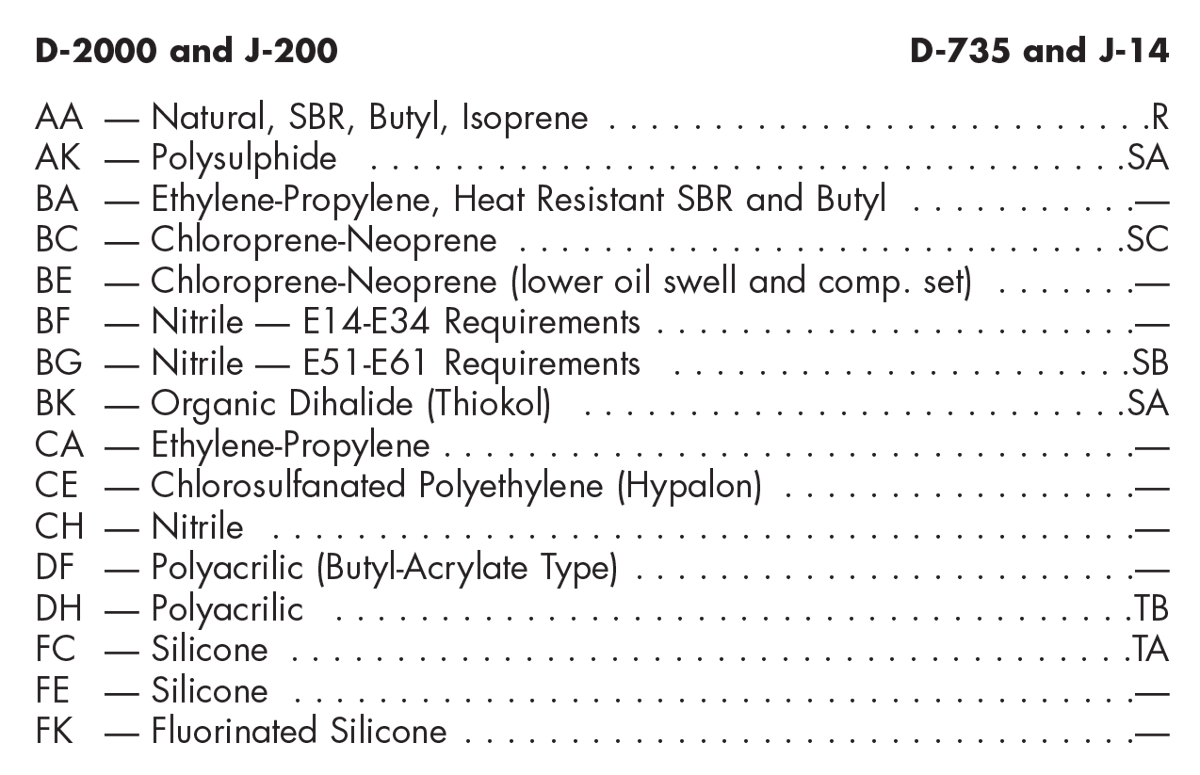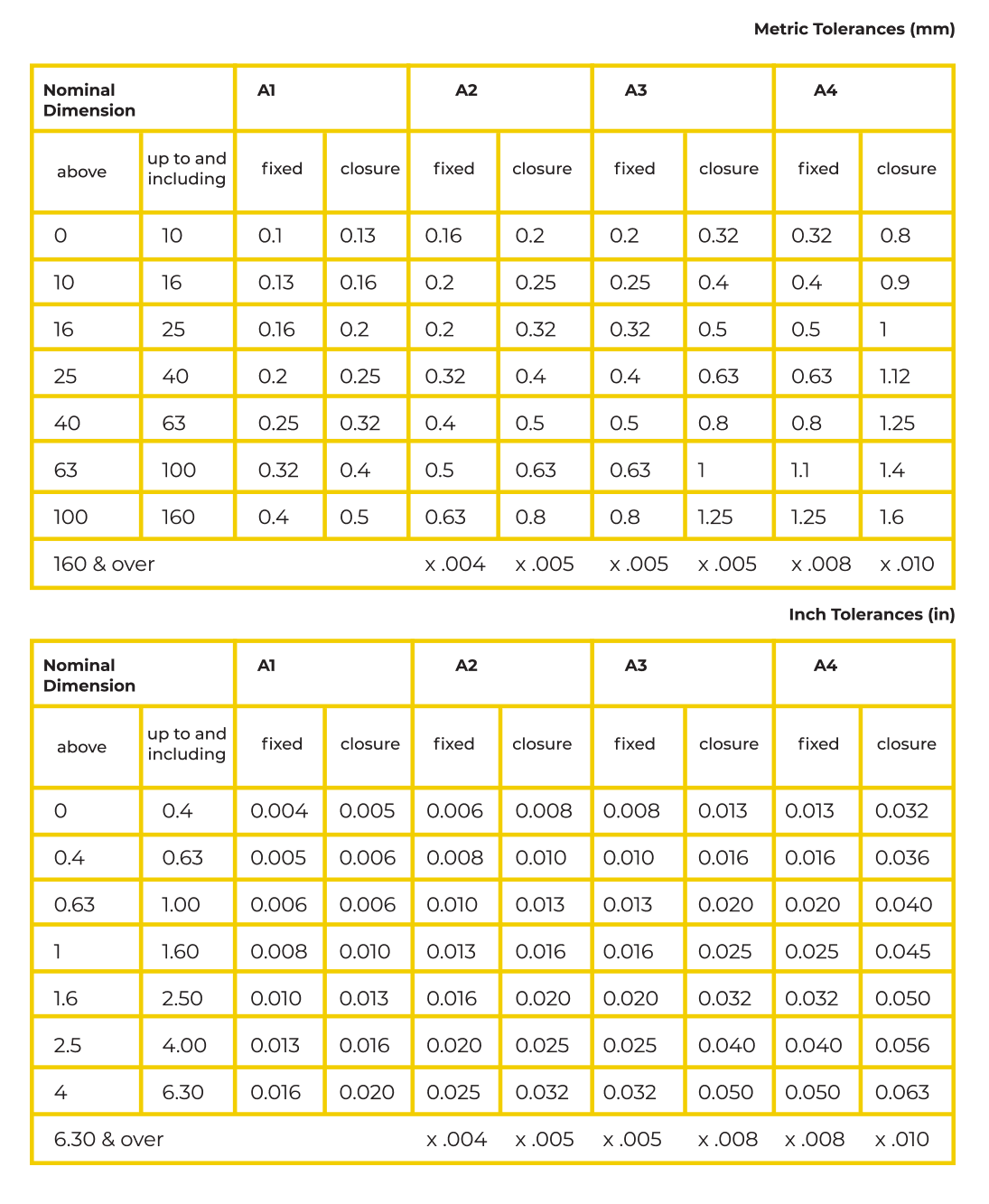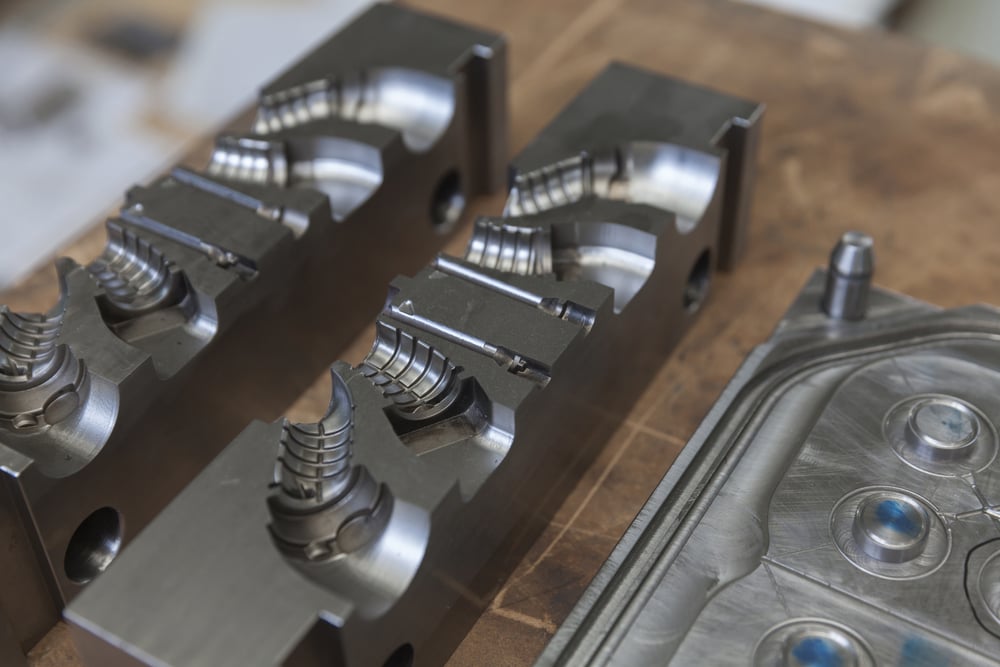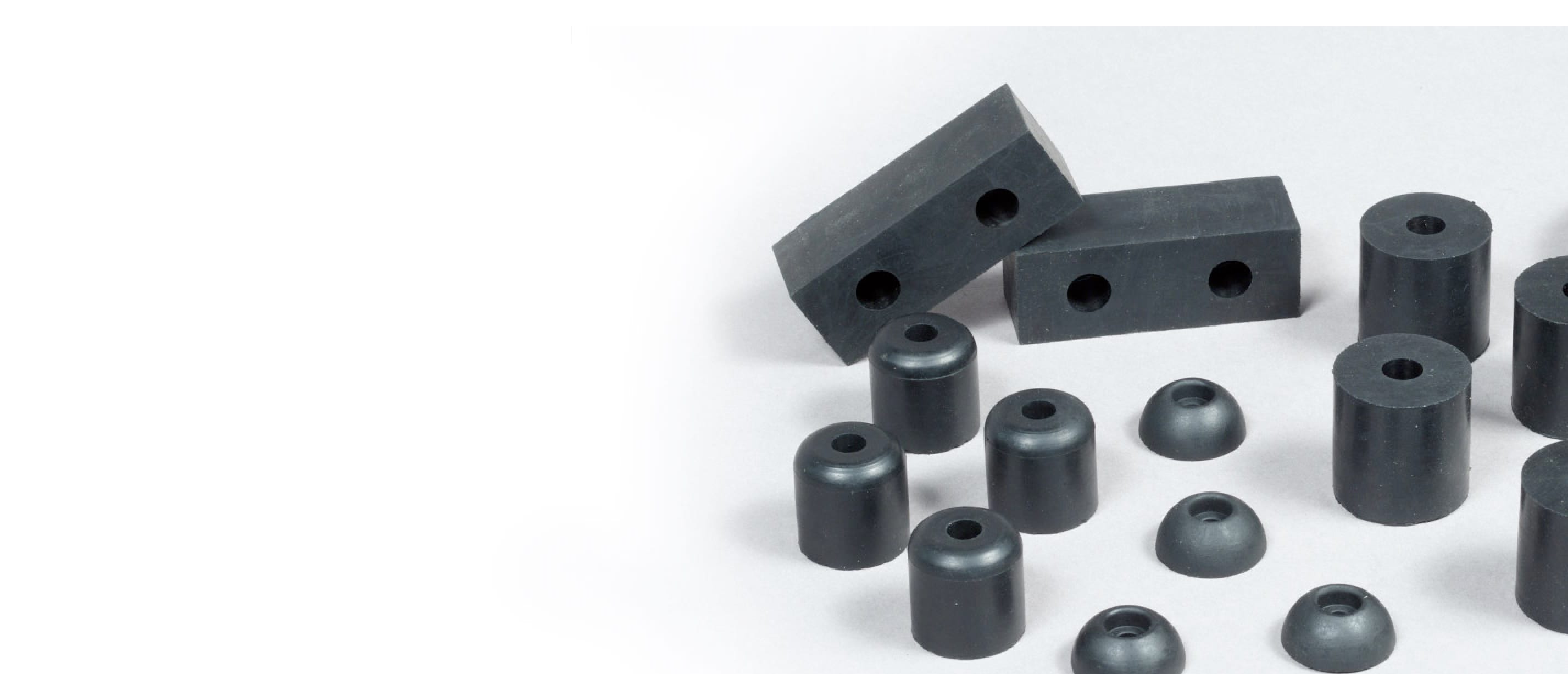Rubber parts function to solve a problem. Generally, that problem is unwanted vibration or a sharp edge that could cause damage to another part; in these cases, a rubber piece serves to isolate, seal and protect. Rubber’s elasticity, high resilience and tensile strength make it the perfect material to address structural and functional issues in physical systems across a wide range of industries. By creating the ideal rubber part to solve a particular problem, rubber parts manufacturers create value for companies, saving them time, money and additional processes.
From the automotive industry to the medical industry to the agricultural industry, rubber parts play an essential role in smooth operations. Both standard and custom rubber parts are manufactured through a process called molding. There are three main types of molding, which will be touched on in this article. Of these, rubber compression molding is arguably the fastest, most economical and best established method for producing simple, precise products. A tried-and-true method, rubber compression molding allows customers to get the rubber parts they need without wasting resources.
Whether you need a large run of standard parts, a preliminary run of custom parts or a prototype for your next big idea, RPM Industrial Rubber Parts is here to help. Interested in rubber compression molding? Our expert engineers can analyze your product model, choose the best molding method and manufacture it to the highest standard of quality.
This guide to rubber compression molding will explore the following topics:
Read on to learn about:
.jpeg)
What is Rubber Compression Molding?
Compression molding is among the oldest techniques for processing a wide range of industrial, commercial and consumer products. Essentially, rubber compression involves taking a chunk of rubber and applying heat and pressure on either side with two molds to create a shaped part — much like a waffle iron creates a waffle.
Although the actual compression process is fairly straightforward, engineers must take several steps and make complex calculations before the rubber compression molding can begin. The pre-compression process involves the following steps:
- Prepare and set up the press equipment
- Set parameters of the molding equipment based on the elastomer that will be used.
- Calculate expansion and contraction of elastomer to ensure proper fill of mold cavities.
- Load and Vulcanize the elastomer in the press.
- Verify molded tolerances on the resulting part and make adjustments accordingly.
After the pre-compression steps are complete, engineers are ready to subject the vulcanized rubber to compression on prepared molds. To perform the rubber compression molding process, engineers take the following steps:
- A carefully calculated mold is prepared by heating and sealing it.
- Uncured rubber is placed in the mold cavity.
- The mold is closed.
- Heat and pressure are applied according to programmable logic controls (and in accordance to respective parameters).
- The mold is opened and the cured rubber removed.
- The cured rubber undergoes a post-molding process that includes deflashing, inspection, post-curing and more.
How to Read an ASTM Rubber Spec
ASTM International (formerly known as American Society for Testing and Materials) is an international organization that develops and publishes technical standards for thousands of products, services, systems and materials. ASTM rubber standards help rubber manufacturers evaluate and ensure the quality and safety of their product.
The purpose of ASTM rubber standards is to create a set of physical properties that the rubber (elastomer) needs to conform to. Typically the ASTM callout will deal with tensile, elongation, compression set, heat aging, fluid compatibility and temperature resistance. For example, ASTM D2000 is a standard that allows buyers to describe rubber materials based on its physical properties in a standardized way. A full specification will have the standard, like ASTM D2000, followed by a series of numbers and letters that indicate last year revised, unit of measure, grade, durometer hardness, tensile strength and more.
Consider the example spec ASTM D 2000-4 M2BG714B14EA14EF11EF31 EO14 EO34 F17. When evaluating this spec, we can determine the following:
- ASTM D 2000 is the standard
- The -4 after the standard indicates that the last year of revision was 2004
- The M after the -4 indicates that all units of measure are metric
- The 2 after the M is the grade of rubber
- The BG* identifies the elastomer that is used, in this case BG stands for Nitrile
- The 714 after the BG indicates durometer, hardness and tensile strength, respectively
*The following chart presents the assigned material prefix letters and the polymer such prefix would normally call out. This is the conversion equivalent applicable under:
 After the durometer, hardness and strength indicators, the remaining characters (B14EA14EF11EF31 EO14 EO34 F17) indicate required tests. The suffix letters (B, E, A, F) indicate supplemental requirements for particular applications that set up more rigid test procedures — beyond the basic call out.
After the durometer, hardness and strength indicators, the remaining characters (B14EA14EF11EF31 EO14 EO34 F17) indicate required tests. The suffix letters (B, E, A, F) indicate supplemental requirements for particular applications that set up more rigid test procedures — beyond the basic call out.
Meaning Of Suffix Letters
Suffix Test Required
|
A |
Heat Resistance |
|
B |
Compression Set |
|
C |
Ozone or Weather Resistance |
|
D |
Compression Deflection Resistance |
|
E |
Fluid Resistance |
|
F |
Low Temperature Resistance |
|
G |
Tear Resistance |
|
H |
Flex Resistance |
|
J |
Abrasion Resistance |
|
K |
Adhesion |
|
L |
Water Resistance |
|
M |
Flammability Resistance |
|
N |
Impact Resistance |
|
P |
Staining Resistance |
|
R |
Resilience |
|
Z |
Any special requirement to be specified in detail |
Deciphering long ASTM rubber specs can be a challenge without the right materials. Luckily, there are many manuals available online for free, as well as for purchase through ASTM International. Find more information on how to read ASTM rubber specs here.
Types of Elastomers
An elastomer is an elastic polymer and is commonly used to describe materials with rubber-like qualities. Elastomers are ideal for molding because they're highly flexible, perform well after molding and have high failure strain compared to other materials.
Natural Rubber
Natural rubber consists of polymers, primarily from the organic compound isoprene. Both uncured rubber and vulcanized rubber have many applications, although the latter has more.
Synthetic Rubber
The purpose of synthetic rubber/elastomers is for performance and functionality that could not be obtained by "natural" rubbers. We think of synthetic rubber as being “engineered for a purpose.” The most common synthetic rubbers include:
Silicone Rubber
A silicone elastomer, also called silicone rubber, is a silicone-based polymer that has been vulcanized. Silicone rubber offers high temperature and abrasion resistance, chemical stability and durability, which is why it has many applications across industries.
Ethylene Propylene Diene Monomer (EPDM) Rubber
EPDM is a type of synthetic rubber that is more resistant to heat, light and ozone than many other natural and synthetic rubbers. EPDM is generally used to seal and protect, which is why it’s a common component in roof membranes, car sealings, weatherstripping and more. Read more about natural rubber versus EPDM rubber.
Fluorocarbon (Viton)
Fluorocarbon benefits include high temperature and excellent chemical resistance. It is often used for seals for aircraft & automotive engines and wide chemical exposure situations.
Hydrogenated Nitrile Rubber (HNBR)
This synthetic rubber is known for its physical strength and high retention after long term exposure to heat, oil & chemicals. HNBR is typically used in performance-demanding applications in industrial or automotive settings; often for seals, hoses & belts in cars.
The RPM Design & Engineering Toolkit will show you the different roles rubber can play and the practicality of using custom parts in your designs.
Types of Molding
The appropriate molding method for anything, including elastomers, is dependent on many factors, including the material used and the shape required. There are three main types of rubber molding, each with distinct characteristics.
| Compression molding |
Injection molding | Transfer molding |
| A versatile process that can be used for simple shapes of different sizes | Ability to control the tolerances better which may be required for some parts | Hybrid process with characteristics of both compression and injection molding |
| Ideal for large pieces | Ideal for tiny and complex shapes, as well as shapes with an internal feature | Ideal for larger pieces that will undergo a secondary process |
|
Ideal for low and medium series of large objects |
More expensive due to the complexity of design | High cavity count |
| Most economical process with lower tooling cost |
Ideal for high-quantity series |
Design flexibility |
| Generally has a shorter production time than compression molding; may be fully automated |
What is a Rubber Compression Set?
The rubber compression set is an important property to consider when molding elastomers. The term describes how well a rubber holds its desired shape when compressed for a specific time, at a specific temperature. Essentially, the compression set is important for the use and function of the part. For example the compression set will determine how well the part will return to its original shape after exposure to a given load. This could be important for any application that uses sealing or uses the rubber for location purposes.
Compression Molding Tolerances
In the world of rubber molding, tolerances refer to allowable variations in a product’s dimensions. Many factors affect tolerances, including shrinkage, mold design, inserts, trim and finish, distortion and environmental storage conditions. Shrinkage and expansion due to environmental exposure, which is perhaps the greatest variable to consider, happens to some extent with all rubber products as they’re removed from heated molds and allowed to cool.
What do Tolerances Mean?
There are four tiers of dimensional tolerances for rubber products, indicated by designations A1-A4. Rubber manufacturers and customers should work together to choose a tolerance based on which tier specifications most closely match the needs of the product in question.
- A1: High Precision. This is the tightest tolerance classification. With A1, the tooling becomes more expensive due to the finer controls needed for the mold design.
- A2: Precision. This designation also suggests a precision rubber product, but less so than A1. It usually requires careful inspection, but necessary measurement methods are simpler than A1’s methods.
- A3: Commercial. This tolerance classification is the most common and economical standard.
- A4: Basic. This is the loosest tolerance classification. Manufacturers use A4 tolerances when some dimensional control is required but is secondary to cost.
Most applications will find that A3 and A2 are the most practical and cost effective.
The Rubber Manufacturers Association (RMA) publishes guidelines and tables for determining tolerance pertaining to fixed and closed dimensions. Fixed dimensions refer to dimensions that are machined onto the top and/or bottom molding presses. Closure dimension refers to the dimensions created when the two presses come together.
To conceptualize the difference between a fixed and closed dimension, it’s helpful to visualize two empty picture frames of identical size and shape, placed on top of one another. When stacked against each other, face to face, their fixed dimension would measure the perimeter of the frames’ outer edges. In contrast, the closed dimension would measure the perimeter of the open rectangular space inside the frames.
The following tolerance tables illustrate the Rubber Manufacturers Association (RMA) standards as they relate to nominal dimension and fixed and closed dimensions, according to tolerance tier:
Tolerance Tables

The Importance of Compression Set
A rubber band can be stretched many times its length and still snap back to its original shape because of its elasticity. This describes tensile strength and potentially elongation. Elasticity makes rubber a desirable material for many industrial products, but it also presents unique challenges to the molding process. Molding rubber to maintain a desired shape requires a large set of complex calculations.
The rubber/elastomers physical characteristics are used to determine the cycle time and press parameters to ensure that each mold cavity is filled and vulcanized correctly. To successfully complete a rubber compression molding, manufacturers must calculate a rubber compound's specific characteristics and requirements. Factors to consider include flexibility, weight, required pressure, mechanical properties, thermal decoupling, vibration dampening and more. Manufacturers must also calculate cost, which is directly related to the weight of a compression molded rubber part.
What is the Compressive Strength of Rubber?
Compressive strength is the maximum compressive load that a particular material can bear before it reaches the strain limit of the rubber where it will plastically deform. Whereas tensile strength measures the maximum stress a material can withstand while being pulled apart, compressive strength measures the maximum stress a material can bear while being compressed, or pushed together.
Investigating the Compression Set of Rubber Compounds
Compression set testing measures rubber’s ability to return to its original thickness after being compressed for a specific amount of time, at a particular temperature and deflection. A loss of resiliency indicates that a particular rubber product may not make an effective gasket, seal or cushioning pad.
A particular rubber compound’s compression set results are expressed as a percentage; the lower the percentage, the better the rubber resists deformation. There are a variety of ways to calculate and test compression sets. ASTM International provides methods and guidelines for testing many rubber compounds.
Why Use Rubber Compression Molding?
One of the many benefits of compression molding is its ability to create rubber objects of various sizes, as well as complete large and small production runs. Another benefit is that once the mold is created, it’s much easier to perform larger runs. However, rubber compression molding is not an ideal modeling method for every rubber part.
Minimum Waste
The process of compression molding requires a manufacturer to create preforms, models that are roughly shaped like the desired product. This requires an abundance of materials to ensure a complete fill of the mold cavity. When using a compression mold the rubber is weighed and cut to an approximate size to be placed on each cavity or section. This ensures that the mold will close correctly and there will be minimum waste. For an easy comparison, let’s think of cookies. You would scoop the approximate size of cookie dough from the main lot and use that to press into a mold (if you molded cookies) to ensure that there is little is wasted. For this reason and others, rubber compression molding is also ideal for low and medium volume applications and large parts that require a long cure time.
Presses and Cavity Considerations
The quality of both presses and cavities vary widely among rubber manufacturers. Multi-cavity molds can prevent the bottleneck in production that less efficient presses often encounter. A larger part or mold (think 10 cavities vs 100 cavities) will require a press with larger capacity (tonnage) or ram pressure. Essentially, the larger the part or higher cavity mold, the larger the press required for successful production.
Large Runs vs. Small Runs
Rubber compression molding has lower tooling and setup costs, so it’s ideal for small and medium size runs, though certainly capable of large runs as well. It’s also an effective method for creating prototypes before heading to large-scale production.
Compression molds are the most economical to produce the number of cavities (which determines the unit cost and press required to reduce the cycle times). Yes, there is a setup to be considered. However, for prototyping purposes it sometimes is the most economical to create a single cavity mold so the part can be validated. The same amount of precision, time and effort go into a mold that will produce 50 parts as a mold that will produce 50,000 parts.

Types of Rubber Parts
Industrial rubber manufacturers generally produce both standard and custom rubber parts. The purpose of standard parts is to allow for quick installations where time is more critical and the user has the flexibility to adapt their design to the standard part. Off the shelf is quicker and less costly. The caveat is that the user generally has to adapt their design to the standard part. If there is more flexibility with time it may be better to create a part that adapts to design rather than the other way around. With the custom options, there are also opportunities to add customer branding and specific features to the part.
Standard Rubber Parts
Standard industrial rubber parts generally fall into the following categories:
- Molded rubber products, like grommets, bumpers, pads, o-rings and caps
- Vibration control products, like mounts, bushings, isolators and couplings
- Extruded rubber products
- Rubber to metal bonded products
Custom Rubber Parts
There are many reasons an individual or company might ask a manufacturer to create a custom rubber part. In some cases, a similar part is being discontinued, or a product is being updated and needs updated parts. In other cases, a custom rubber part is completely new and would fill a gap in the market. Whatever the reason, RPM Industrial Rubber Parts is happy to help companies pursue custom part manufacturing.

What Impacts How Long a Compressed Rubber Part Lasts?
Rubber parts don’t last forever, and over time they will begin to degrade. The two main forms of rubber degradation are hardening and softening, typically a result from the environmental conditions it is exposed to (heat, UV, cold, etc.) and/or any fluids (oils, greases, chemicals, etc). Even in pre-production, manufacturers can get a good idea of how long a compressed rubber part will last by using a computer modeling technique known as Finite Element Analysis (FEA). Accelerated environment testing will help determine how long a part will last.
How to Calculate the Shelf Life or Rubber Parts
Several factors impact how long a compressed rubber part lasts in storage, including polymer type, compound formulation and storage environment. Although some types of rubber, like commercial-grade neoprene and styrene-butadiene rubber (SBR), may only last three to five years in storage, other rubbers, like silicone, may last 20 years in storage. Regardless of type, rubber should be stored away from direct sunlight in a cool, dry place.
It's best to check with RPM on the standard shelf life an elastomer will have.
Can You Switch Suppliers for Rubber Parts?
Companies can — and do — switch rubber parts suppliers all the time. And sometimes, there’s a good reason to do so. For example, if the volume of the part has increased over time, it might be a good time to look at creating a larger cavity tool to reduce the production time which ultimately might be lower unit price. There could be a number of reasons why you would want to review if new tooling is required. However, it’s important to remember that switching rubber parts suppliers will mean creating new molds for any custom rubber parts you want produced.
.jpeg)
RPM Rubber Parts: Superior Rubber Compression Molding for Every Use
As a well-established production method, rubber compression molding has stood the test of time. When you consider the many benefits of compression molding, it’s not hard to understand why it’s still a popular creation method. Rubber compression molding is a relatively simple process with low tooling costs; it’s ideal for large, thick parts, but capable of crafting small parts, too. Rubber compression molding is as flexible as it is effective, but not on its own; the manufacturer’s commitment, competence and care make the definitive difference.
At RPM Industrial Rubber Parts, we understand that the quality of one rubber part can have a tremendous impact on the overall efficiency and safety of a machine, product or tool. We also understand that meeting a customer’s pricing goals and expectations is an important part of the manufacturing process. When you partner with RPM, you can be sure you’re getting a high-quality design, composition and pressing, as well as thoughtful, transparent communication. Whether you need a large run of standard parts, a small run of custom parts or just want to explore a prototype, we’re here to help. Reach out to us online or give us a call at 888.842.5668.




